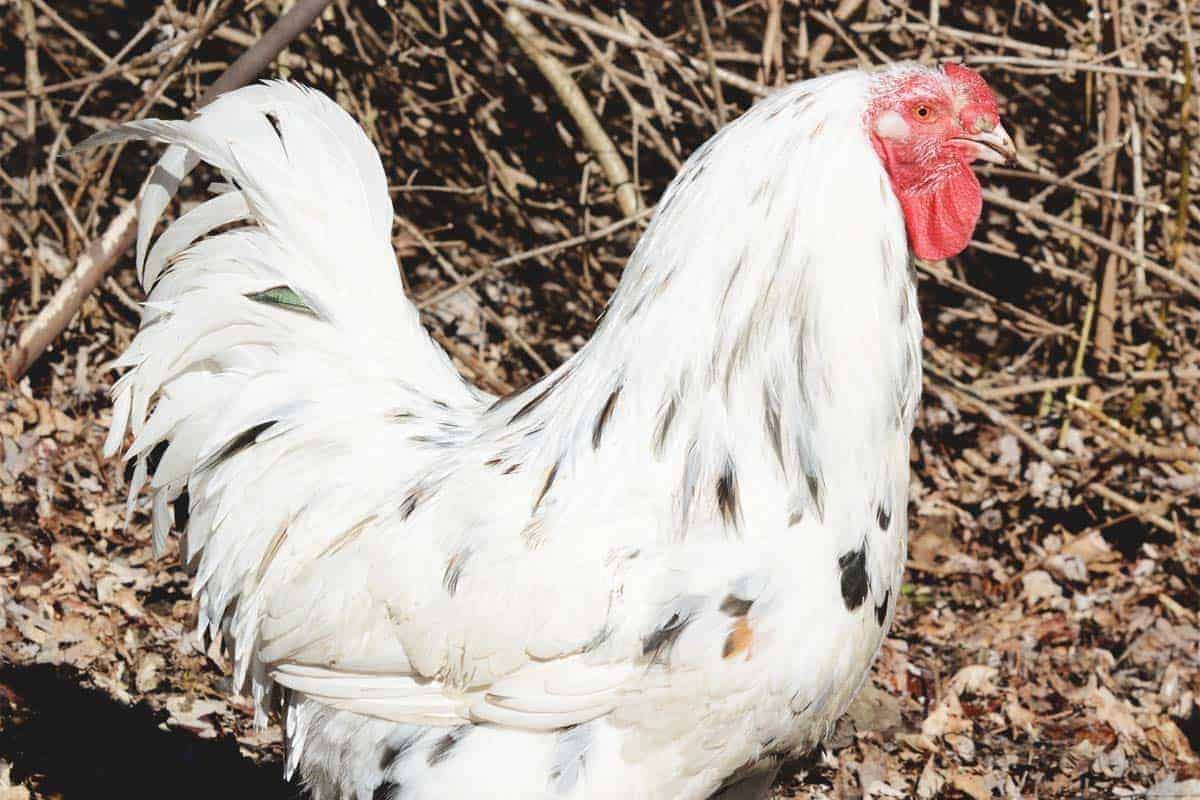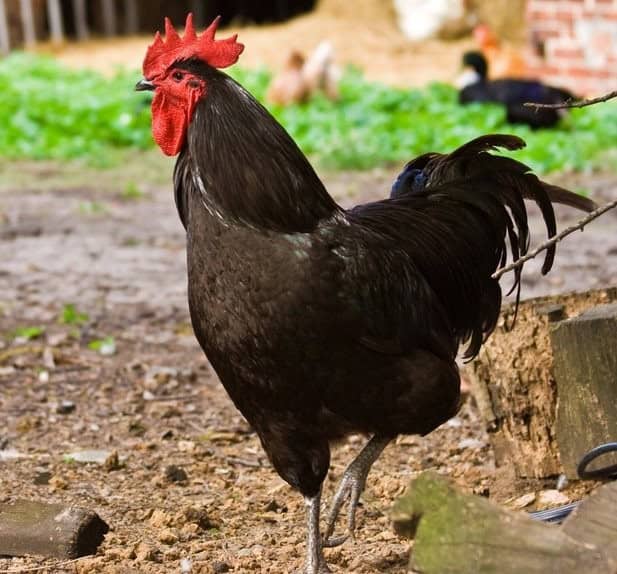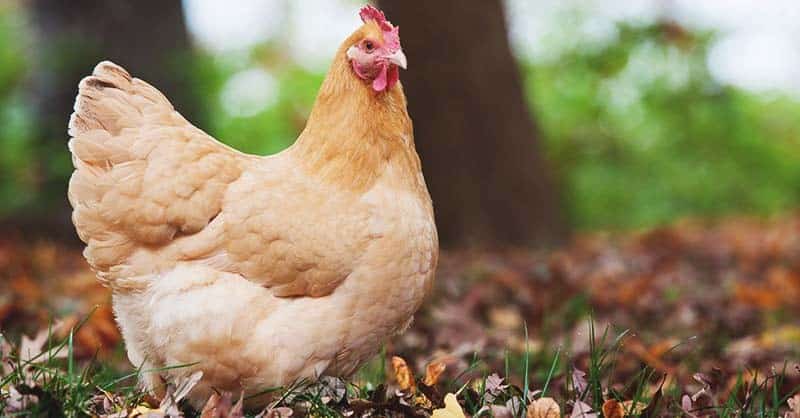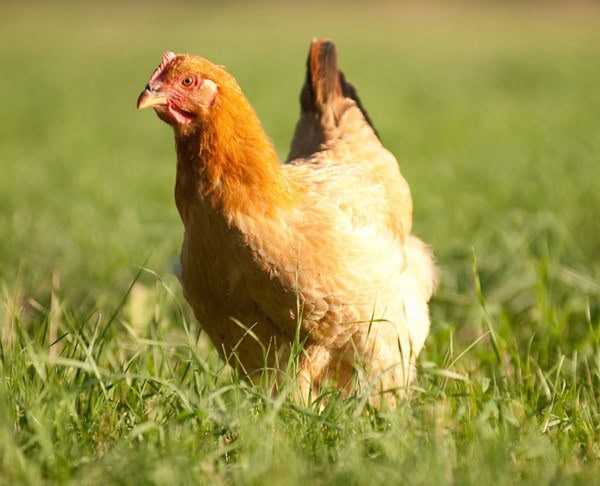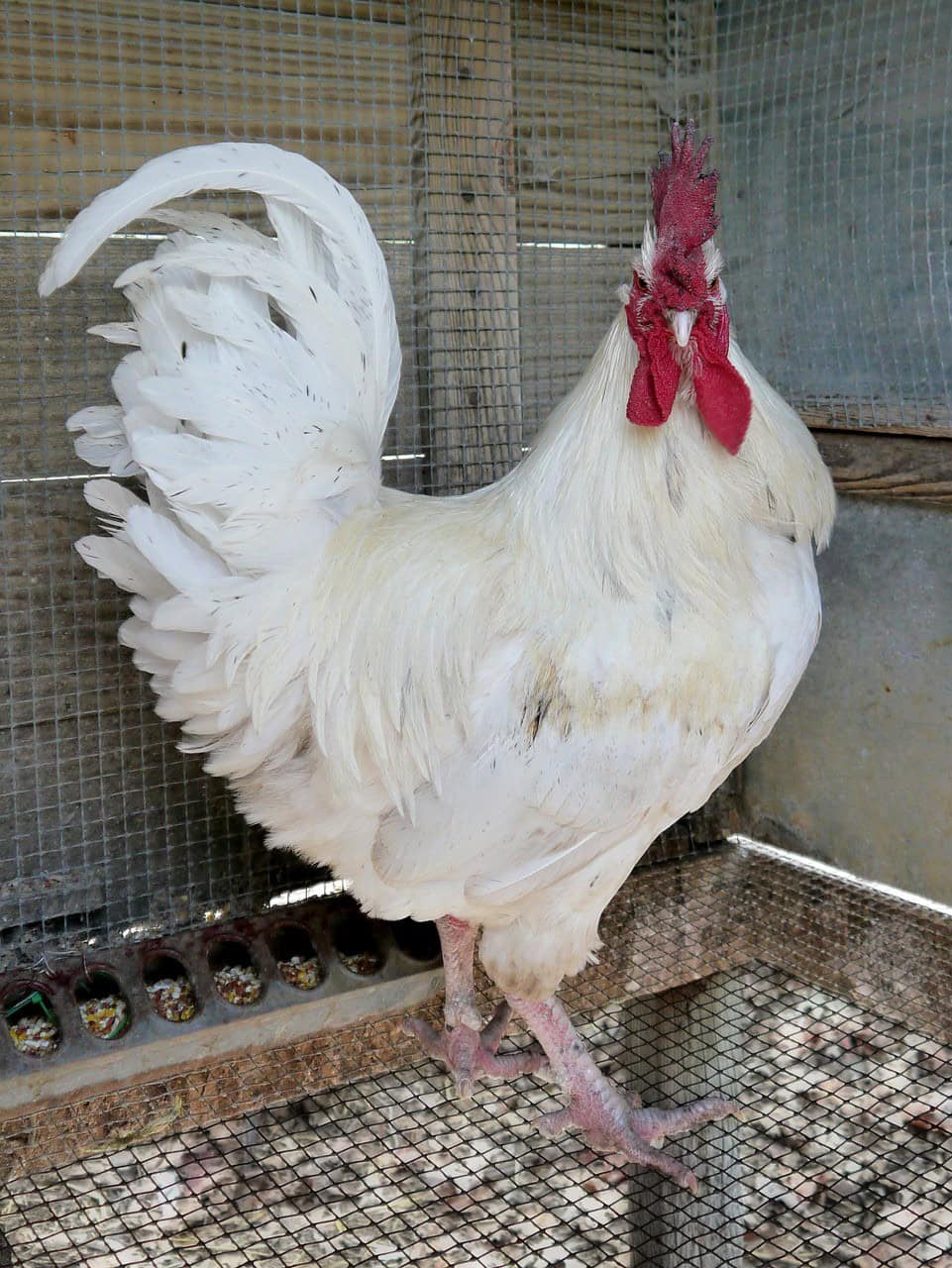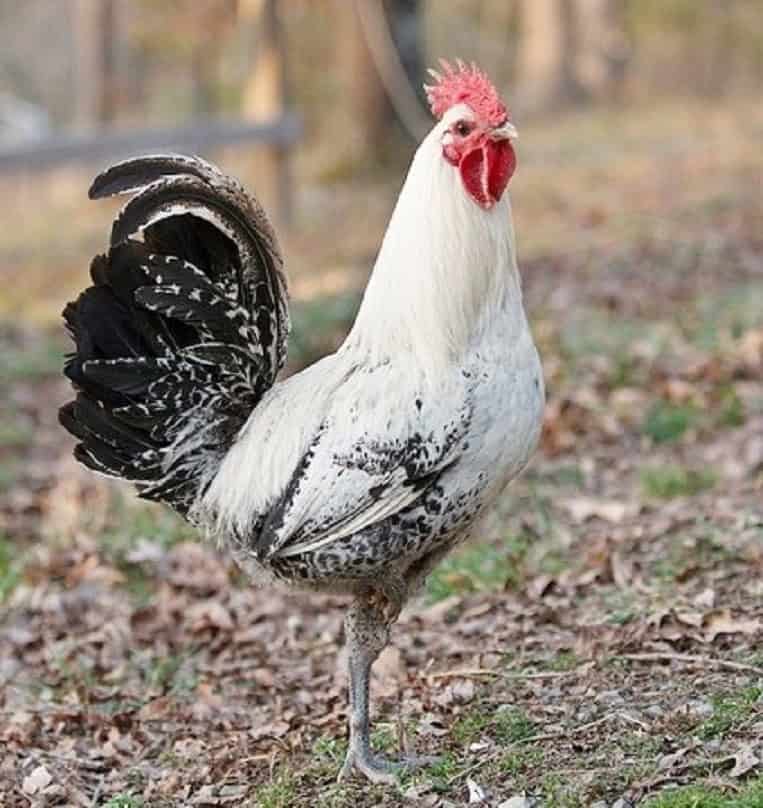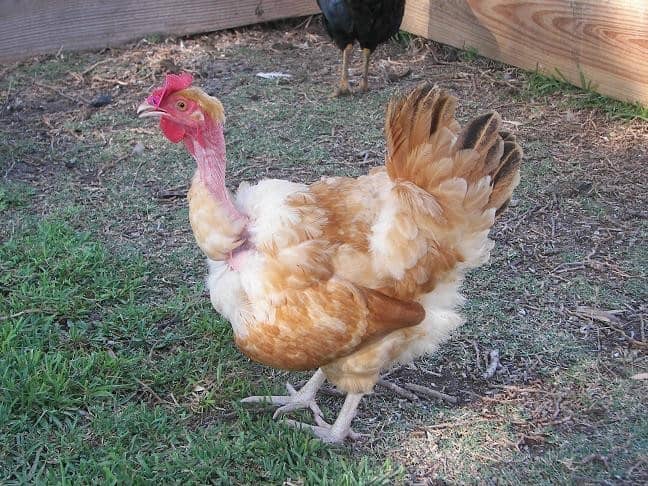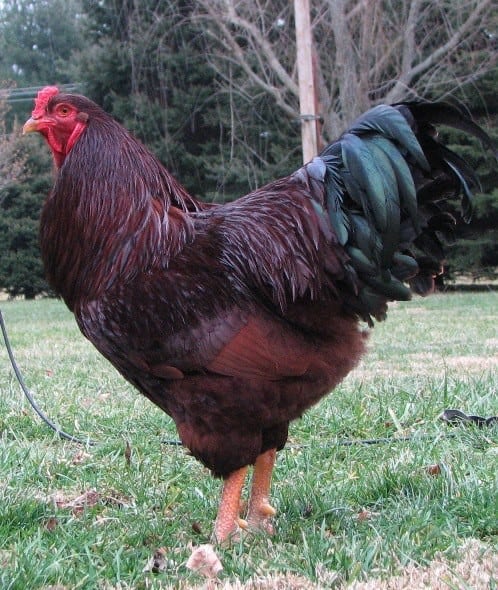As consumer awareness of food consequences grows, so does the popularity of growing one’s own. For city dwellers, this often begins with fruits and veggies before expanding to meat production for protein. Among backyard-raised meats, chicken is the top choice. Specifically bred ‘Broilers’ excel in this role due to their rapid growth rate compared to egg-laying or dual-purpose breeds.
Within just five weeks, Broilers can reach 4-5 pounds, while at ten weeks they often top out at a hefty 10 pounds – perfect for most families. This makes raising Broilers in the backyard an ideal option for those seeking a self-sustaining lifestyle.
Standard Meat Chickens
Cornish Cross
The Cornish Cross, along with its hybrids, is a highly sought-after breed for raising chickens specifically for meat purposes. They have an impressive ability to reach 12 pounds in just 6-8 weeks, making them the top choice among commercial and backyard producers alike. In fact, their accelerated growth rate surpasses that of dual-purpose breeds, not to mention those bred solely for meat production.
Despite their rapid growth, Cornish Cross chickens exhibit a surprisingly low activity level, likely due to their intense focus on putting on weight. Physically, these birds boast broad breasts, large thighs and legs, and a vibrant yellow skin tone – a true feast for the eyes and palate. With males reaching 12 pounds and females 8 pounds at maturity, they’re ready to harvest in as little as 4-6 weeks.
The pros of raising Cornish Cross chickens include their speedy growth rate, generous white meat yields, and low maintenance requirements. However, it’s essential to note that these birds do require a significant amount of feed, making them more resource-intensive than some other breeds.
Jersey Giant
The Jersey Giant chicken has an intriguing history, having been developed in the US with the aim of replacing the traditional turkey. Although this goal wasn’t fully achieved, the breed has carved out a unique niche for itself in the poultry world. One of its defining characteristics is its impressive size, with males weighing between 13 and 11 pounds on average, while females weigh around 10 pounds.
Interestingly, Jersey Giants grow at a slower pace compared to similar Broiler breeds, requiring more time and resources to raise them. This slower growth rate, combined with the need for large amounts of food and space, makes them less suitable for commercial meat production but a highly sought-after addition to backyard chicken coops. In terms of temperament, Jersey Giants are known for their calm and docile nature, although males can be slightly more aggressive.
As an added bonus, these chickens lay extra-large brown eggs, making them a great option for egg production while waiting for them to reach their full potential. The breed comes in three colors: blue, black, and white.
Bresse
The Bresse chicken breed is characterized by its striking white plumage and notable physical features, including vibrant blue feet. While they may be an expensive option, the cost of ownership is relatively low once you’ve established a breeding pair. The primary expense will be feeding your flock. Despite their high price tag, the Bresse is renowned for producing some of the world’s most tender and flavorful meat.
Interestingly, this breed comes in a range of colors including white, black, grey, and blue. Although not recognized by the American Poultry Association, the Bresse remains a popular choice among poultry enthusiasts due to its exceptional meat quality. While more widely kept in France than the US, the breed’s primary drawback is its cost. On average, male Bresse chickens weigh 7 pounds, while females tip the scales at 5 pounds, with an average harvest time of 16-20 weeks.
Some notable pros and cons of keeping Bresse chickens include their docile nature, delicious meat, and moderate size. The breed’s only drawback is its tendency not to be overly meaty. Overall, the Bresse chicken breed offers a unique combination of characteristics that make it a worthwhile investment for many poultry enthusiasts.
Orpington
The Orpington is a popular breed of chicken known for its impressive size and exceptional meat quality. Female Orpingtons typically reach an average weight of 7-8 pounds, making them a great choice for backyard farmers. While they’re not the largest breed, their slow growth rate allows for a more relaxed raising experience. One of the standout features of this breed is their remarkable egg-laying abilities, with some hens producing up to 200 eggs per year.
In terms of meat production, Orpingtons are highly sought after due to their tender and flavorful flesh. Males typically weigh around 10 pounds at harvest time, which falls within the 18-24 week range. The breed comes in a variety of colors, including Buff, black, blue, and white, offering farmers a range of options for adding some visual flair to their flocks.
Freedom Rangers
Freedom Rangers, a breed specifically developed for the pesticide-free meat market, are renowned for their ability to thrive on low-protein feeds. Unlike Cornish Crosses, they excel at foraging for food, making them an excellent choice for roaming in large pens. This versatility is reflected in their diet, as they can survive on a mix of field bugs and corn feed, ultimately resulting in healthy birds ready for consumption.
While Freedom Rangers may take longer to mature than other breeds, they are sought after for their exceptional taste, with some enthusiasts even claiming they’re perfect for rotisserie cooking. The breed is characterized by its red coloration, often accompanied by barred or spotted black feathers, as well as shades of bronze and grey.
Interestingly, Freedom Rangers are found in three distinct weights: males reach 6 pounds, females 5 pounds, and their harvest time typically falls between 9-11 weeks.
Dual-Purpose Chickens
For those seeking versatility in their chicken keeping endeavors, dual-purpose breeds offer an attractive solution. These birds can serve as reliable layers and later be converted into productive meat birds, maximizing the value they bring to the table. When budget-friendly options are a priority and breeding opportunities abound, these breeds take on added significance. After all, nothing beats the satisfaction of replenishing one’s stock through natural means.
White Leghorn (And Brown)
The White Leghorn chicken variant is renowned for its exceptional egg-laying abilities, producing up to 280 eggs annually. Interestingly, the main difference between this breed and its Brown Leghorn counterpart lies solely in their plumage colors, with both varieties laying white eggs. The Brown Leghorn’s active nature makes it an excellent forager, thriving in warm climates. While generally docile, males can exhibit occasional grumpiness.
Physical characteristics include a male weight of 6 pounds and female weight of 5 pounds, with a harvest time ranging from 16 to 21 weeks. This breed boasts several pros, including its strong foraging abilities, pleasant personality, good egg production, and decent meat quality. The White Leghorn is also available in various color variants, featuring a single comb or rose comb.
Egyptian Fayoumi
Fayoumi chickens, a breed originating from Egypt, are renowned for their free-spirited nature. They thrive in warm climates and exhibit a strong instinct to forage, making them excellent at finding food on their own. Despite their tendency to be feisty, they are generally non-aggressive birds. Furthermore, Fayoumis possess a remarkable ability to resist diseases, ensuring the health of your flock.
Another notable characteristic is their rapid maturation process, which enables them to start laying eggs early in life. This means you can expect a bountiful harvest before the chickens reach their ideal weight for meat production. On average, male Fayoumi chickens weigh around 5 pounds, while females tip the scales at approximately 4 pounds. The time it takes for these birds to mature and be ready for harvesting is typically between 14-18 weeks.
In terms of annual egg production, you can expect a respectable 150 eggs from your Fayoumi flock. Some pros of keeping Fayoumi chickens include their fast growth rate, delicious eggs and meat, as well as the fact that they are flighty, making them entertaining to watch. However, it’s worth noting that some breeders may offer silver-coated variants, which can add an extra layer of visual appeal to your flock.
Turken (Naked Neck)
Turken Naked Neck chickens are often mistaken for being a hybrid of chickens and turkeys due to their striking appearance. However, they are simply a breed that has been named after their unique characteristics. These birds are remarkably adaptable to various environments and can thrive in both hot and cold climates, making them an ideal choice for backyard meat bird production across the country.
Their stress-free nature and ability to put on weight quickly also make them a popular option among farmers. In addition to their impressive hardiness, Turken Naked Neck chickens are also known for being prolific layers and dedicated mothers. As for their physical characteristics, males weigh around 6 pounds, while females tip the scales at approximately 4 pounds. Their egg-laying capabilities are impressive as well, with an annual production of 104 eggs.
Some notable pros of keeping Turken Naked Neck chickens include their ease of care, decent egg and meat production, and the fact that they come in a range of vibrant colors including red, blue, cuckoo, buff, black, and white.
Buckeye
Buckey Chickens, a hardy breed of poultry, thrive in cold climates. Their adaptability to harsh conditions, combined with their natural disease resistance and gentle nature, make them an excellent choice for farmers and enthusiasts alike. While the males can become slightly temperamental around smaller animals and felines, they remain docile overall.
The breed’s affinity for cold weather makes them particularly well-suited for those residing in the northern United States or other colder regions, where winters can be harsh and populations may dwindle. Their consistent breeding habits provide a welcome respite from the unpredictability of winter losses. Physical characteristics include males weighing around 9 pounds and females at approximately 6.5 pounds, with an average harvest time of 16-21 weeks.
Annually, Buckey Chickens produce around 200 eggs. Some notable pros and cons of this breed include its dual purpose capabilities, excellent cold weather resistance, and availability in the Mahogany Red variant.
Chantecler
Chantecler chickens excel in cold climates, with a remarkable aptitude for laying eggs. One of their most notable characteristics is their early maturity, which allows them to begin laying eggs promptly while also reaching slaughter weight quickly. This trait makes them an excellent choice for free-range farming, as they naturally gravitate towards foraging alongside their feed. In terms of physical attributes, males typically weigh 9 pounds, with females weighing 7 pounds.
The breed’s egg production is impressive, averaging 200 annual eggs, with a harvest time ranging from 11 to 16 weeks. Some notable pros and cons include fast growth rates, suitability for free-range farming, and the existence of variants such as the Partridge and white breeds. Overall, prioritizing healthy living and eating should be a top consideration for anyone, regardless of their choice of backyard chicken breed.
How to Fatten Your Meat Chickens the Right Way
When raising meat chickens, it’s crucial to provide them with the proper nutrition and feeding schedule. Fortunately, all of the breeds discussed in this article share similar dietary needs. To achieve an optimal meat-to-fat ratio, feed your chickens for 12 hours and leave them food-free for the remaining 12 hours. This 12/12 hour cycle will encourage lean muscle growth by stimulating physical activity.
In fact, without some effort to reach their water source, chickens can become remarkably sedentary. Water should be placed on the opposite side of the enclosure from the feed, promoting exercise and preventing laziness. A well-balanced diet and regular access to clean water are also essential for your birds’ overall health. This is particularly important when aiming to create lean muscle tissue that yields a desirable texture and flavor in the finished product.
For more comprehensive information on chicken feeding best practices, refer to these informative articles: The Complete How To On Feeding Chickens, What NOT to Feed Chickens, How to Ferment Chicken Feed to Improve Egg Production, Homemade Healthy Chicken Treats Recipes for Happy Chickens, and How to Create a Chicken Garden.
